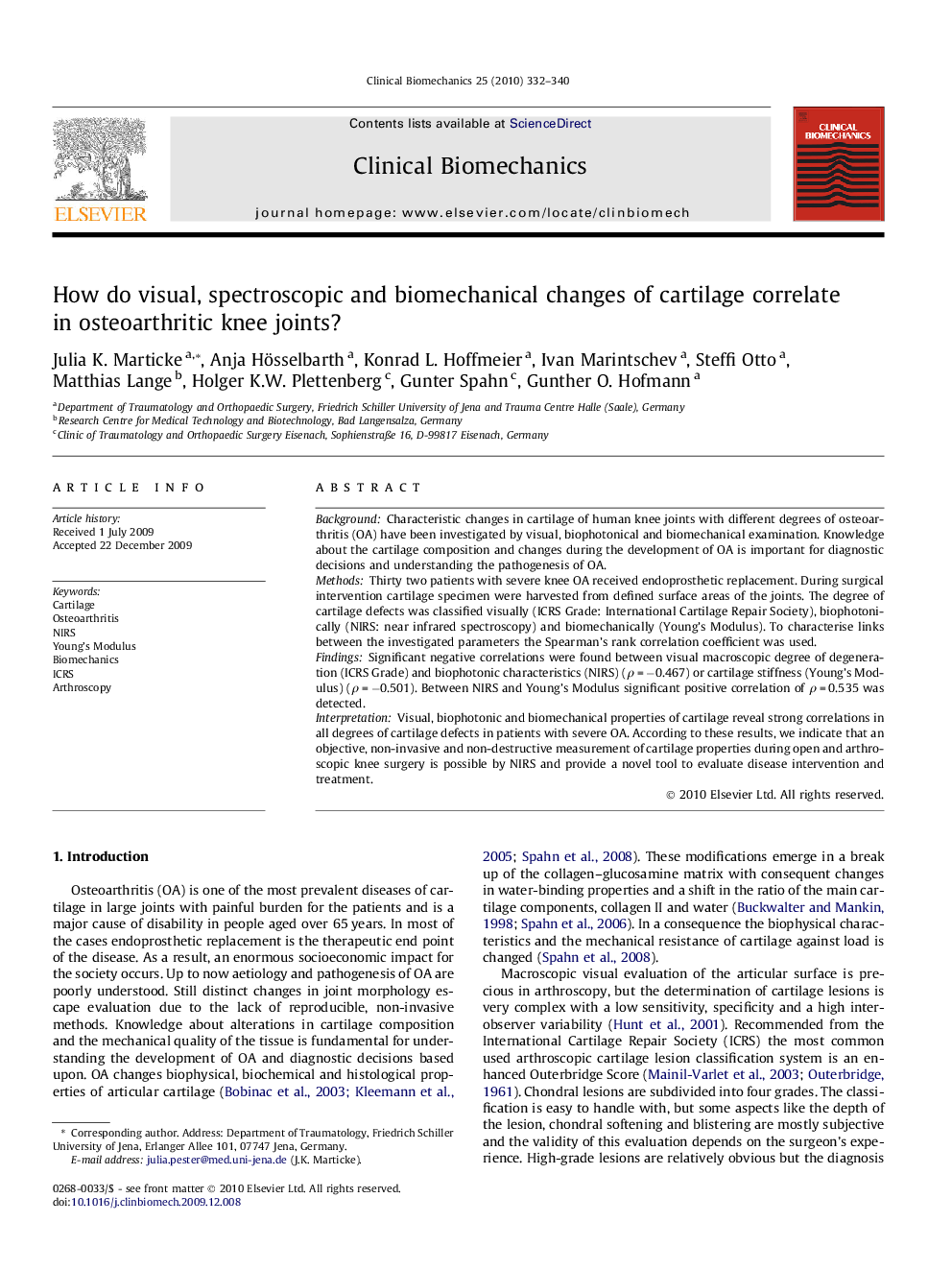| Article ID | Journal | Published Year | Pages | File Type |
|---|---|---|---|---|
| 4050618 | Clinical Biomechanics | 2010 | 9 Pages |
BackgroundCharacteristic changes in cartilage of human knee joints with different degrees of osteoarthritis (OA) have been investigated by visual, biophotonical and biomechanical examination. Knowledge about the cartilage composition and changes during the development of OA is important for diagnostic decisions and understanding the pathogenesis of OA.MethodsThirty two patients with severe knee OA received endoprosthetic replacement. During surgical intervention cartilage specimen were harvested from defined surface areas of the joints. The degree of cartilage defects was classified visually (ICRS Grade: International Cartilage Repair Society), biophotonically (NIRS: near infrared spectroscopy) and biomechanically (Young’s Modulus). To characterise links between the investigated parameters the Spearman’s rank correlation coefficient was used.FindingsSignificant negative correlations were found between visual macroscopic degree of degeneration (ICRS Grade) and biophotonic characteristics (NIRS) (ρ = −0.467) or cartilage stiffness (Young’s Modulus) (ρ = −0.501). Between NIRS and Young’s Modulus significant positive correlation of ρ = 0.535 was detected.InterpretationVisual, biophotonic and biomechanical properties of cartilage reveal strong correlations in all degrees of cartilage defects in patients with severe OA. According to these results, we indicate that an objective, non-invasive and non-destructive measurement of cartilage properties during open and arthroscopic knee surgery is possible by NIRS and provide a novel tool to evaluate disease intervention and treatment.
